Motorola Talkabout T380 Handleiding
Bekijk gratis de handleiding van Motorola Talkabout T380 (8 pagina’s), behorend tot de categorie Radio. Deze gids werd als nuttig beoordeeld door 55 mensen en kreeg gemiddeld 4.9 sterren uit 28 reviews. Heb je een vraag over Motorola Talkabout T380 of wil je andere gebruikers van dit product iets vragen? Stel een vraag
Pagina 1/8

Additional Information
Internal Voice Operated Transmission (iVOX)/Voice Operated Transmission (VOX)
The microphone detects if you are talking when using VOX/iVOX. If you are talking, the radio
triggers transmission automatically.
• When iVOX is displayed, the radio uses the built-in microphone to detect your voice.
• When a VOX headset is connected to the radio, VOX is displayed and the headset
microphone is used to detect your voice.
You can turn off or select the following settings to select the sensitivity level
.
Note: Pressing the button cancels the VOX/iVOX transmission.PTT
L3 High Sensitivity for quiet environments. Speaking softly is enough to trigger
VOX/iVOX transmission.
L2 Medium Sensitivity for most environments
L1 Low Sensitivity for noisy environments. You must speak up to trigger VOX/
iVOX transmission.
Call Tone
When you send a Call Tone, the receiving radio sounds a tone similar to phone ringing tone.
Scan
Radio scans for voice activity by cycling through the channels. When signals are detected, the
signal is sent to the speaker. This feature allows you to find which channel is being used by
other groups and have heavy traffic. This helps you to avoid the busy channels when deciding
which channel to use for your group.
Monitor
You can hear everything including noise on your current radio channel. This feature allows you
to monitor a channel for weak signals.
Roger Tone
This feature adds a beep to mark the end of a transmission when you release the PTT button.
When the receiver hears the roger tone, it is a confirmation that complete message has been
received.
Weatherproof
This radio is weatherproof to IP54 standards. The radio is resistant to occasional splash of
water only when the battery and connector covers are sealed. Do not expose the radio to water
for extended period of time. Do not submerge the radio in water.
Battery Information
The rated battery life is measured under industrial standard 5-5-90 duty cycle under lab
conditions. (5% of the time transmitting, 5% receiving with speaker on, 90% waiting for
incoming call.)
CAUTION: Risk of explosion if the battery is replaced by an incorrect type.
Battery Capacity Maintenance
The T38x series radio comes equipped with a rechargeable Li-Ion battery. This battery should
be fully charged before initial use to ensure optimum capacity and performance. Battery life is
determined by several factors. Among the more critical are the regular overcharge of batteries
and the average depth of discharge with each cycle. Typically, the greater the overcharge and
the deeper the average discharge, the fewer cycles a battery will last.
For example, a battery which is overcharged and discharged 100% several times a day, lasts
1. Transmit or Receive
2. High or Low Power
3. Two-Way
4. Weather Radio
(HOME)
5. Monitor
6. Lock
7. Battery
8. Scan
9. Mute
10.Weather Alert
11.Easy Pairing
12.Call Tone
13.Roger Tone
14.Code
15.VOX/iVOX
16.Channel
Buttons Descriptions
Menu/Power • Press to enter Menu and scroll through the menu screen.
• Press and hold for two seconds to turn on or off the radio.
and • Press to adjust the volume level.
• Press to change the settings or trigger action in the menu screen.
PTT • Press and hold to talk, release to stop transmission.
• Press to exit menu screen and return to home screen.
Easy Pairing Copy channel and code settings from radio A to radio B.
1. Radio B–Hold the button until you hear a beep. The radio is ready to be
paired. Multiple radios can be paired simultaneously.
2. Radio A–Hold the button until you hear a double beep. The radio
broadcasts channel and code settings for other radios to pair.
1. Getting to Know Your Radio
Battery Door Latch
(Slide to lock/unlock)
PTT Button
Microphone
USB Charging Port
Power/Menu
button
Headphone Jack
Easy Pairing
button
16
3
2
1
4
5
6 7
9
8
11
10
12
13
1415
fewer cycles than a battery that receives less of an overcharge and is discharged to 50% per
day. Further, a battery which receives minimal overcharging and averages only 25% discharge,
lasts even longer.
Push-to-Talk Time-out Timer
To avoid air-wave traffic congestion, transmission ends after one minute even if the PTT button
is still pressed. To reset the timer, release the PTT button briefly.
Weather Channel Frequencies
Weather Receiver
Your radio can tune in to broadcasts by the United States National Oceanic and Atmospheric
Administration (NOAA) Weather Radio and Environment and Climate Change Canada (ECCC)
Weather Radio.You can listen to a weather channel (see “Weather Channels and Frequencies”
table for details) or set your radio to alert you to emergency weather broadcasts that interrupt
routine broadcasts.
Both NOAA and ECCC have transmitters located throughout the United States and Canada,
respectively. These transmitters broadcast watches, forecasts, and other information 24 hours
a day.
Weather
Channel
Frequency
(MHz)
Weather
Channel
Frequency
(MHz)
WX1 162.550 WX7 162.525
WX2 162.400 WX8 161.650
WX3 162.475 WX9 161.775
WX4 162.425 WX10 161.750
WX5 162.450 WX11 162.000
WX6 162.500
Use the Menu button to scroll through the menu screen. Press PTT to exit any screen and
return to home screen.
Menu Screen Use the or button to perform the following
actions:
Call Tone
Start or stop Call Tone transmission.
Monitor Start or stop monitoring the air-wave. You can hear signals
transmitted on the channel setting of your radio. If there is no
signal, you can hear static.
Scan Start or stop scanning the air-wave. Radio scans all the
channels one after another. When a signal is detected, you
hear the signal on the speaker and the radio displays the
channel of the detected signal.
Adjust VOX To change the Voice Operated Transmission (VOX) setting,
select OFF or L1 to L3.
L3 being the most sensitive, use it in quiet environments.
Adjust Roger Tone Enable or disable the roger tone. Roger tone is a beep tone
that you hear when PTT is released.
Adjust Channel
(Channel number blinks) Change the radio channel setting.
Adjust Code
(Code number blinks) Change the radio code setting.
Adjust Auto Key Lock Change the Auto Key Lock setting.
Weather Radio (HOME) When the weather channel display is on (not blinking),
use +/- buttons to change speaker volume setting,
or you can use the Menu button to make the weather
channel blink. When the weather channel blinks, use + / -
buttons to change the weather channel setting.
Adjust Weather Alert
Turn weather alert feature on or off.
3. Navigating the Menu Pages
Menu – CDOO TRQH
Menu – MRQLWRU
Menu – SFDQ
Menu
Menu
0HQX
Menu – Adj CodeXVW
Menu
Menu – $GMXVW :HDWKHU$OHUW
Menu – Adj XVW 92;
Menu – Adj ChannelXVW
7ZR:D\ Home
Menu
:HDWKHU5DGLR+20(
Menu – Menu – AdjXVW5RJHU7RQH
Menu – Adj XVW $XWR.H\/RFN
Menu
Menu
0HQX
0HQX
Menu
Menu
021
/
Please check with your local weather office for frequency and details or visit
www.weather.gov/nwr in the US to view the appropriate transmitter for your area.
As with two-way radio reception, weather channel reception depends on how close you are to a
transmitter and whether you are indoors or outdoors. Because weather channels are
transmitted without codes, they may contain static or noise. Weather Alert does not function
while actively transmitting or receiving in two-way mode.
The use of the NOAA logo does not provide an endorsement or implied endorsement by the
National Weather Service of NOAA, nor does the use of the Weather Radio logo provide an
endorsement or implied endorsement by Environment and Climate Change Canada
(ECCC).
Channel and Frequencies
Note: Power refers to maximum allowable power as defined by FCC/ISED for each channel
under FRS rules for USA and FRS/ISED for each channel under FRS rules for USA and FRS/
GMRS for Canada and is not a reflection of the power specification of the radio.
Channel Frequency
(MHz)
Power
(W) Channel Frequency
(MHz)
Power
(W)
1 462.5625 2.0 12 467.6625 0.5
2 462.5875 2.0 13 467.6875 0.5
3 462.6125 2.0 14 467.7125 0.5
4 462.6375 2.0 15 462.5500 2.0
5 462.6625 2.0 16 462.5750 2.0
6 462.6875 2.0 17 462.6000 2.0
7 462.7125 2.0 18 462.6250 2.0
8 467.5625 0.5 19 467.6500 2.0
9 467.5875 0.5 20 462.6750 2.0
10 467.6125 0.5 21 462.7000 2.0
11 467.6375 0.5 22 462.7250 2.0
Make sure you are in Two Way Radio Mode by looking for the Two Way icon on the LCD. You
can return to the Two Way mode by pushing the PTT button briefly.
Talking/Transmitting
1. Press and hold the PTT button, then start talking into the microphone.
2. Release the PTT button to stop transmission.
Note: Do not press the PTT button when others are talking. When more than one radio
transmits on the same channel, the air-wave is jammed and all transmissions are
lost.
Listening/Receiving
• The radio speaker receives signal automatically if radio is set to the same channel and
code as the transmitting radio.
• Ensure the speaker volume is set to an appropriate level.
Adjusting Speaker Volume
1. Press or from Two Way or Weather Home screens.
Auto Key Lock
• When Auto Key Lock feature is enabled, the 3 front buttons will be locked after 10 seconds
of inactivity.
• To unlock the 3 front buttons, press and hold any of them for 2 seconds.
Using Headsets
• When a headset is connected to the radio, radio speaker is disabled. You need to wear
headset to monitor and receive messages.
• If your headset has button, you can use the button to make a transmission with the PTT
microphone on the headset.
• You can still use the button on the radio to make a transmission with the microphone PTT
on the radio.
Listening to Weather Broadcast
Go to the Weather Radio (HOME) menu page to listen to Weather Broadcast. When you are
in this Menu page, you radio does not receive signal from other two- way radios.
From the Weather Radio (HOME) menu page, you can use the or button to change
speaker volume, or use the button to make the Weather Channel display blink, and Menu
then use the or button to change the channel.
Weather Alert
Your radio can be set to respond to NOAA Weather Radio emergency messages. A special
alarm tone sounds an alert and turns on the weather receiver to give you immediate weather
and emergency information.
You can turn this alert on or off in the Adjust Weather Alert Menu Page.
4. Using Your Radio
MOTOROLA ® TWO-WAY RADIO T380/T383 M
MOTOROLA, MOTO, MOTOROLA SOLUTIONS and the Stylized M logo are
trademarks or registered trademarks of Motorola Trademark Holdings, LLC and are
used under license. All other trademarks are the property of their respective owners.
© 2021 Motorola Solutions, Inc. All rights reserved.
Printed in
*MN007509A01*
MN007509A01-AA
Installing and Charging the Battery
Turning your Radio On and Off
To turn the radio on or off, hold the Power/Menu button until the display turns on or off.
Channel and Codes
• Set your radios with the same channel and code setting to enable communication with
other radios.
• The channel setting controls the radio frequency. To avoid jamming, select a channel that is
not used by others in your area. See table in Section 3, “Scan” for more information on
selecting unused channel.
• The code setting on the transmitting and receiving radios need to match, otherwise the
receiving radio blocks the received signal. This feature helps you to mute unwanted voices
from other radio users transmitting on your channel.
• When code is set to zero, radio does not block any signal and everything that is picked up
on the channel is sent to the speaker. Motorola Solutions recommends setting your code to
zero when communicating with radio that does not support the code feature. See Section
3, “Navigating the Menu Pages” for detailed instructions on how to change settings.
• Channel and code settings can be copied from one radio to multiple radios simultaneously
with a shortcut feature called Easy Pairing. See table in Section 1, “Easy Pairing” for
instruction on how to copy channel and code settings.
Transmission Power
• In some countries different powers are allowed for different channels. The H/L icon
indicates if the current channel is a High or Low power channel. Motorola Solutions
recommends you to use high power channels for more reliable communications. Select
low power channels only when your radios are not far from each other and you want to
maximize the battery life.
2. Setting up Your Radio
1. Observe the polarity before installing the battery.
2. Charge the battery using the desktop charger or USB. Charging is completed when the
battery icon on the radio stops blinking. Charging takes up to 8 hours.
1
2
2
1
Attaching CarabinerInserting and Removing Belt Clip
English

Safety and General Information
Caution
Before using this radio, read this booklet which contains important operating instructions.
For information on product details, brochures, user manuals and approved accessories,
please refer to www.motorolasolutions.com.
Compliance with RF Exposure Standards
National and international regulations require manufacturers to comply with the RF energy
exposure limits for portable two-way radios before they can be marketed. Your Motorola
Solutions two-way radio is designed, manufactured, and tested to comply with all applicable
national and international regulations for human exposure to radio frequency electromagnetic
energy.
RF Energy Exposure Awareness and Control Information and Operational
Instructions for General Population and Uncontrolled Environment Use
For more information on what RF energy exposure is, see the following websites:
•https://www.fcc.gov/
•http://www.who.int/peh-emf/project/en/
•http://www.ic.gc.ca/eic/site/smt-gst.nsf/eng/sf11467.html
•http://www.ic.gc.ca/eic/site/smt-gst.nsf/eng/sf01904.html
For additional information, see https://www.motorolasolutions.com/en_us/about/company-
overview/corporate-responsibility/governance-and-policies.html.
Class B Digital Device
For a Class B digital device or peripheral, the instructions furnished the user shall include the
following or similar statement, placed in a prominent location in the text of the manual:
Note: This equipment has been tested and found to comply with the limits for a Class B digital
device, pursuant to part 15 of the FCC Rules. These limits are designed to provide
reasonable protection against harmful interference in a residential installation. This
equipment generates, uses and can radiate radio frequency energy and, if not installed
and used in accordance with the instructions, may cause harmful interference to radio
communications. However, there is no guarantee that interference will not occur in a
particular installation. If this equipment does cause harmful interference to radio or
television reception, which can be determined by turning the equipment off and on, the
user is encouraged to try to correct the interference by one or more of the following
measures:
• Reorient or relocate the receiving antenna.
• Increase the separation between the equipment and receiver.
• Connect the equipment into an outlet on a circuit different from that to which the
receiver is connected.
• Consult the dealer or an experienced radio/TV technician for help.
Notice to Users (FCC and Industry Canada)
This device complies with Part 15 of the FCC rules and Industry Canada's license-exempt
RSS's per the following conditions:
• This device may not cause harmful interference.
• This device must accept any interference received, including interference that may cause
undesired operation.
Changes or modifications made to this device, not expressly approved by Motorola Solutions,
could void the authority of the user to operate this equipment.
Mexico and Panama
Mexico and the Republic of Panama do not require authorization to use FRS radio equipment
frequencies.
Supplier’s Declaration of Conformity
Operating Instructions
• Transmit no more than 50% of the time. To transmit (talk), press the Push-To-Talk PTT ( )
button. To receive calls, release the PTT button.
• Hold the radio in a vertical position in front of the face with the microphone (and other parts
of the radio including the antenna) at least 1 in. (2.5 cm) away from the nose or lips. Antenna
should be kept away from the eye.
• When worn on the body, always place the radio in a Motorola Solutions-approved clip,
holder, holster, case, or body harness for this product.
• DO NOT hold the antenna when the radio is transmitting.
• DO NOT use any portable radio that has a damaged antenna. If a damaged antenna comes
into contact with your skin, a minor burn can result.
• To ensure continued compliance with applicable RF exposure limits, use only Motorola
Solutions-approved, supplied or replacement antennas, batteries, and accessories.
• For a list of Motorola Solutions-approved accessories please refer to your user manual or
visit www.motorolasolutions.com
Acoustic Safety
Exposure to loud noises from any source for extended periods of time may temporarily or
permanently affect your hearing. The louder the volume of the radio, the sooner your hearing
will be affected. Hearing damage from loud noise is sometimes undetectable at first, and can
have a cumulative effect.
To protect your hearing, follow these precautions:
• Use the lowest volume necessary to do your job.
• Turn up the volume only if you are in noisy surroundings.
• Turn down the volume before putting on a headset or headphones.
• Limit the amount of time you use a headset or headphones at high volume.
• When using the radio without a headset or headphones, do not place the speaker of the
radio directly against your ear.
Medical Devices
If you use a personal medical device, such as a pacemaker or hearing aid, consult the
manufacturer of your device to determine if it is adequately shielded from RF energy. Your
physician may be able to assist you in obtaining this information.
Holsters Incorporating Magnets
Motorola Solutions holsters incorporate strong, neodymium magnets. If you use a personal
medical device, such as a pacemaker or hearing aid, consult the manufacturer of your device
to determine if it can be used in close proximity to magnets. Your physician may be able to
assist you in obtaining this information. Also be aware that magnets can damage other
products, including cell phones, computers, hard drives, and other electronic devices, as well
as credit cards and magnetic media. Keep the holster away from any mechanical device that
could be affected by a magnetic field. Consult the manufacturer of your product to determine if
your device or product can be used in close proximity to magnets.
Safety Instructions for Power Supply
1. The power supply is for use with equipment according to IEC/EN/UL 62368-1/60950-1.
2. The power supply is for indoor use in dry locations.
3. The equipment shall be connected to a nearby and easily accessible socket outlet.
4. If the power supply is damaged or defective, do not repair or use the power supply.
5. For more details, please refer to https://www.motorolasolutions.com/en_xu/support/emea-
compliance.html#phnnav_other-products.
Operational Warnings
The following explains the operational warnings:
For Vehicle With Air Bags
Blasting Caps and Blasting Areas
Potentially Explosive Atmospheres
Batteries
• Charge your battery using the approved Motorola Solutions charger.
• Connect the charger/power supply to a nearby and easily accessible power outlet.
• Charge only Li-Ion type rechargeable batteries. Other types of batteries may burst, causing
personal injury or damage. Turn off radio before charging.
• Use the battery in accordance with its water and/or dust Ingress Protection (IP) rating.
• Do not discard your battery into a fire.
• Do not replace the battery in any area labeled “Hazardous Atmosphere”.
• Do not disassemble, crush, puncture, shred, or otherwise attempt to change the form of your
battery.
• Do not dry a wet or damp battery with an appliance or heat source, such as a hair dryer or
microwave oven.
• Do not allow conductive material such as jewelry, keys, or beaded chains to touch exposed
battery terminals.
• Do not dispose of batteries with household waste.
Do Not Substitute Options or Accessories
The Motorola Solutions communications equipment certified as intrinsically safe by the
approving agency (FM, UL, CSA, CENELEC) is tested as a complete system which consists of
the listed agency approved portable, approved battery, and approved accessories or options,
or both. This approved portable and battery combination must be strictly observed. There must
be no substitution of items, even if the substitute has been previously approved with a different
Motorola Solutions communications equipment unit. Approved configurations are listed by the
approving agency (FM, UL, CSA, CENELEC).
Supplier’s Declaration of Conformity
Per FCC CFR 47 Part 2 Section 2.1077(a)
Responsible Party
Name: Motorola Solutions, Inc.
Address: 2000 Progress Pkwy, Schaumburg, Il.
60196.
Phone Number: 1-800-927-2744
Hereby declares that the product:
Model Name: T380 and T383
conforms to the following regulations:
FCC Part 15, subpart B, section 15.107(a), 15.107(d),
and section 15.109(a).
Warning:
• Refer to vehicle manufacturer's manual prior to installation of electronic
equipment to avoid interference with air bag wiring.
• DO NOT place a portable radio in the area over an air bag or in the air
bag deployment area. Air bags inflate with great force. If a portable radio
is placed in the air bag deployment area and the air bag inflates, the
radio may be propelled with great force and cause serious injury to
occupants of the vehicle.
Warning: To avoid possible interference with blasting operations, turn off
your radio when you are near electrical blasting caps, in a blasting area,
or in areas posted: “Turn off two-way radio.” Obey all signs and
instructions.
!!
!!
Warning:
• Do not carry a radio that is not certified for Hazardous
Locations into a potentially explosive atmosphere. It could
result in a serious injury or death. You should only use a
radio certified for hazardous locations in potentially explosive
atmospheres.
• Explosive atmospheres refer to hazard classified locations that may
contain hazardous gas, vapors, dusts, such as fueling areas below decks
on boats, fuel, or chemical transferor storage facilities, and areas where
the air contains chemicals or particles such as grain, dust, or metal
powders. Areas with potentially explosive atmospheres are often, but not
always, posted.
• DO NOT remove, install, or charge batteries in such areas, or remove or
install antennas. Sparks in a potentially explosive atmosphere can cause an
explosion or fire resulting in bodily injury or even death.
Caution: Use only Motorola Solutions approved batteries. Risk of
explosion if the battery is replaced by an incorrect type.
!!
The Intrinsically Safe Approval Label affixed to radio refers to the intrinsically safe
classification of that radio product, and the approved batteries that can be used with that
system.
The manual PN referenced on the Intrinsically Safe Approval Label identifies the approved
accessories and or options that can be used with that portable radio unit.
Using a non-Motorola Solutions-intrinsically safe battery and/or accessory with the Motorola
Solutions-approved radio unit will void the intrinsically safe approval of that radio unit.
European Union (EU) Waste of Electrical and Electronic Equipment (WEEE)
Directive
Licensing Information
Warranty
Consumer Two-Way Radio Products and Accessories purchased in the United
States and Canada
What Does this Warranty Cover?
Subject to the exclusions contained below, Motorola Solutions, Inc. (“Motorola”) warrants the
Motorola Solutions branded consumer two-way radios that operate via Family Radio Service
or General Mobile Radio Service (“Products”), the Motorola Solutions branded or certified
accessories sold for use with these Products (“Accessories”) to be free from defects in
materials and workmanship under normal consumer usage for the period(s) outlined below.
This limited warranty is the exclusive remedy of a consumer, and applies as follows to new
Products and Accessories and purchased by consumers in USA and Canada, which are
accompanied by this written warranty:
Who is Covered?
This warranty extends only to the first consumer purchaser, and is not transferable.
What will MOTOROLA SOLUTIONS, INC. do?
Motorola Solutions, Inc., at its option, will at no charge repair, replace or refund the purchase
price of any Products or Accessories that do not conform to this warranty.
We may use functionally equivalent reconditioned/refurbished/pre-owned or new Products or
Accessories.
What Other Limitations Are There?
Any Implied Warranties, Including Without Limitation
The implied warranties of merchantability and fitness for a particular purpose, shall be limited
to the duration of this limited warranty, otherwise the repair, replacement, or refund as provided
under this express limited warranty is the exclusive remedy of the consumers, and is provided
in lieu of all other warranties, express or implied. In no event shall Motorola Solutions be liable,
whether in contract or tort (including negligence) for damages in excess of the purchase price
of the product or accessory, or for any indirect, incidental, special or consequential damages of
any kind, or loss of revenue or profits, loss of business, loss of information or other financial
loss arising out of or in connection with the ability or inability to use the products or accessories
to the full extent these damages may be disclaimed by law.
Some states and jurisdictions do not allow the limitation or exclusion of incidental or
consequential damages, or limitation on the length of an implied warranty, so the above
limitations or exclusions may not apply to you. This warranty gives you specific legal rights,
and you may also have other rights that vary from state to state or from one jurisdiction to
another.
USA and Canada
HOW TO OBTAIN WARRANTY SERVICE OR OTHER INFORMATION?
To obtain service or information, please call
USA and Canada Two-Way Radios
1-800-448-6686.
www.motorolasolutions.com/talkabout
Latin America
Toll Free:
Mexico 001-855-241-8253
Panama 001-800-205-3867
Toll or long distance:
Spanish +1 630-203-5826
English +1 630-203-5824
For Accessories:
Please call the telephone number designated above for the Product with which they are used.
You will receive instructions on how to ship the Products or Accessories at your expense, to
Motorola Solutions or a Motorola Solutions Authorized Repair Center. To obtain service, you
must include: (a) a copy of your receipt, bill of sale or other comparable proof of purchase; (b)
a written description of the problem; (c) the name of your service provider, if applicable; (d) the
name and location of the installation facility (if applicable) and, most importantly; (e) your
address and telephone number.
For more information, please visit us at:
The European Union's WEEE directive requires that products sold into
EU countries must have the crossed out trash bin label on the product (or
the package in some cases). As defined by the WEEE directive, this
cross-out trash bin label means that customers and end-users in EU
countries should not dispose of electronic and electrical equipment or
accessories in household waste. Customers or end-users in EU countries
should contact their local equipment supplier representative or service
center for information about the waste collection system in their country.
Products Covered Length Of Coverage
Products and Accessories
as defined above, unless otherwise
provided for below.
Two (2) years from the date of purchase by the
first consumer purchaser of the product unless
otherwise provided for below
Products and Accessories
that are repaired or replaced.
The balance of the original warranty or for
ninety (90) days from the date returned to the
consumer, whichever is longer.
Exclusions From Warranty Coverage
Normal Wear and Tear:
Periodic maintenance, repair and replacement of Products or Accessories due to normal
wear and tear.
Abuse and Misuse:
Defects or damage that result from: (a) improper operation, storage, misuse or abuse,
accident or neglect, such as physical damage (cracks, scratches, etc.) to the surface of the
Products and Accessories resulting from misuse; (b) contact with liquid, water, rain, extreme
humidity or heavy perspiration, sand, dirt or the like, extreme heat, or food; (c) use of the
Products or Accessories for commercial purposes or subjecting the Product or Accessory to
abnormal usage or conditions; or (d) other acts which are not the fault of Motorola Solutions.
Use of Non-Motorola Solutions branded Products and Accessories:
Defects or damage that result from the use of Non-Motorola Solutions branded or certified
products, accessories, software or other peripheral equipment.
Unauthorized Service or Modification:
Defects or damages resulting from service, testing, adjustment, installation, maintenance,
alteration, or modification in any way by someone other than Motorola Solutions or its
authorized service centers.
Altered Products:
Products or Accessories with (a) serial numbers or date tags that have been removed,
altered or obliterated; (b) broken seals or that show evidence of tampering; (c) mismatched
board serial numbers; or (d) nonconforming or non-Motorola Solutions branded housings, or
parts.
Communication Services:
Defects, damages, or the failure of Products or Accessories due to any communication
service or signal you may subscribe to or use with the Products or Accessories.
https://www.facebook.com/
MotorolaTalkaboutWalkieTalkies
http://bit.ly/Talkabout
1 2 34
567 8

Renseignements complémentaires
Transmission activée par la voix interne (iVOX)/Transmission activée par la voix
(VOX)
Lorsque vous utilisez la fonction VOX/iVOX, le microphone détecte si vous parlez. Si vous
parlez, la radio déclenche automatiquement l’émission.
• Lorsque iVOX apparaît à l’écran, la radio utilise le microphone intégré pour détecter votre voix.
• Lorsqu’un casque d’écoute VOX est connecté à la radio, VOX apparaît à l’écran et le
microphone du casque d’écoute est utilisé pour détecter votre voix.
Vous pouvez désactiver la fonction ou sélectionner les paramètres suivants pour sélectionner le
niveau de sensibilité.
Remarque : Appuyez sur la touche PTT pour annuler l’émission VOX/iVOX.
L3 Sensibilité élevée pour les environnements peu bruyants. Il suffit de parler
à voix basse pour déclencher l’émission VOX/iVOX.
L2 Sensibilité moyenne convenant à la plupart des environnements.
L1 Faible sensibilité pour les environnements bruyants. Vous devez parler à
voix haute pour déclencher l’émission VOX/iVOX.
Tonalité d’appel
Lorsque vous envoyez une tonalité d’appel, la radio réceptrice émet une tonalité rappelant la
sonnerie d’un téléphone.
Balayer
La radio procède à un balayage pour détecter l’activité vocale en parcourant les canaux. Lors
de la détection d’un signal, ce signal est envoyé au haut-parleur. Cette fonction vous permet de
déterminer si un canal est actuellement utilisé par d’autres groupes et soumis à un trafic
important. Au moment de décider du canal à utiliser pour votre groupe, cette fonction vous aide
à éviter les canaux déjà occupés.
Moniteur
Vous pouvez tout entendre, y compris le bruit sur votre canal radio actuel. Cette fonction vous
permet de surveiller un canal pour repérer les signaux faibles.
Tonalité de confirmation
Avec cette fonction, un bip est produit pour marquer la fin de l’émission lorsque vous relâchez
la touche PTT. La tonalité de confirmation entendue par le récepteur indique que le message a
bien été reçu en entier.
Résistance aux intempéries
Cette radio résiste aux intempéries conformément aux normes IP54. La radio résiste aux
éclaboussures d’eau occasionnelles uniquement lorsque les couvercles de la batterie et du
connecteur sont scellés. Ne pas exposer la radio à l’eau pendant une période prolongée. Ne
pas submerger la radio dans l’eau.
Information sur la batterie
La durée de vie nominale de la batterie est mesurée en laboratoire sur la base d’un cycle de
service 5-5-90, qui constitue la norme de l’industrie. (5 % de temps d’émission, 5 % de temps
de réception avec haut-parleur activé, 90 % d’attente pour un appel entrant.)
MISE EN GARDE : L’utilisation d’une batterie de rechange d’un type non approprié est
associée à un risque d’explosion.
Entretien de la capacité de la batterie
La radio de série T38x est équipée d’une batterie au lithium-ion rechargeable. Cette batterie
doit être entièrement chargée avant la première utilisation pour assurer une capacité et une
performance optimales. L’autonomie de la batterie dépend de plusieurs facteurs. Parmi les plus
1. Émission ou réception
2. Puissance élevée ou
faible
3. Bidirectionnel
4. Radio-Météo (ACCUEIL)
5. Moniteur
6. Verrouillage
7. Batterie
8. Balayer
9. Muet
10.Alerte météo
11.Couplage facile
12.Tonalité d’appel
13.Tonalité de confirmation
14.Code
15.VOX/iVOX
16.Canal
Touches Description
Menu/Mise en
marche
• Appuyez sur cette touche pour accéder au menu et faire défiler l’écran du
menu.
• Maintenez cette touche enfoncée pendant deux secondes pour allumer ou
éteindre la radio.
et
• Appuyez sur cette touche pour régler le niveau du volume.
• Appuyez sur cette touche pour modifier les paramètres ou déclencher une
action dans l’écran du menu.
PTT
• Maintenez cette touche enfoncée pour parler, relâchez-la pour cesser d’émettre.
• Appuyez sur cette touche pour quitter l’écran du menu et revenir à l’écran
d’accueil.
Couplage facile
Copiez les paramètres de canal et de code de la radio A à la radio B.
1. Radio B – maintenez la touche enfoncée jusqu’à ce que vous entendiez un
bip. La radio est prête à être couplée. Plusieurs radios peuvent être
couplées simultanément.
2. Radio A – maintenez la touche enfoncée jusqu’à ce que vous entendiez un
bip. La radio diffuse les paramètres de canal et de code pour permettre le
couplage des autres radios.
1. Faire connaissance avec votre radio
Loquet du couvercle
de la batterie
(faire glisser pour
verrouiller/déverrouiller)
Touche PTT
Microphone
Ports de charge USB
Touche Mise en
marche/Menu
Prise pour écouteur
Bouton de
couplage facile
16
3
2
1
4
5
6 7
9
8
11
10
12
13
1415
importants, on retrouve la surcharge régulière de la batterie et le niveau de perte de charge
moyen associé à chaque cycle. Généralement, un état de surcharge fréquent et un niveau de
perte de charge moyen important contribuent à diminuer le nombre de cycles de la batterie.
Par exemple, une batterie surchargée et déchargée à 100 % plusieurs fois par jour offrira
moins de cycles de vie qu’une batterie moins surchargée et dont le niveau de perte de charge
est de 50 % par jour. En outre, une batterie dont l’état de surcharge est minimal et dont le
niveau de perte de charge moyen est de 25 % durera plus longtemps.
Minuterie du délai d’inactivité Presser pour Parler (PTT)
Pour éviter le brouillage d’onde aérienne, l’émission prend fin au bout d’une minute même si la
touche PTT reste enfoncée. Pour réinitialiser la minuterie, relâchez brièvement la touche PTT.
Fréquences de canal météo
Récepteur météo
Votre radio permet d’écouter les diffusions des radios de conditions météorologiques de la
United States National Oceanic and Atmospheric Administration (NOAA) et d’Environnement et
Changement climatique Canada (ECCC). Vous pouvez écouter un canal météo (voir le tableau
« Fréquences et canaux météo » pour plus de détails) ou configurer votre radio pour recevoir
les alertes météo d’urgence qui interrompent les diffusions de routine.
Canal météo Fréquence
(MHz) Canal météo Fréquence
(MHz)
WX1 162,550 WX7 162,525
WX2 162,400 WX8 161,650
WX3 162,475 WX9 161,775
WX4 162,425 WX10 161,750
WX5 162,450 WX11 162,000
WX6 162,500
Utilisez la touche Menu pour faire défiler l’écran du menu. Appuyez sur cette touche pour quitter
l’écran du menu et revenir à l’écran d’accueil.
Écran du menu Utilisez la touche ou pour effectuer les
actions suivantes :
Tonalité d’appel Permet de lancer ou d’arrêter l’émission de la tonalité d’appel.
Moniteur Permet de lancer ou d’arrêter la surveillance de l’onde aérienne.
Vous pouvez entendre les signaux émis sur le canal de votre radio.
S’il n’y a pas de signal, vous pouvez entendre de la statique.
Balayer Permet de lancer ou d’arrêter le balayage de l’onde aérienne.
La radio balaie tous les canaux, un à un. Lorsqu’un signal est
détecté, vous entendez ce signal sur le haut-parleur et la radio
affiche le canal du signal détecté.
Régler VOX Pour modifier le paramètre de transmission activée par la voix
(VOX), sélectionnez OFF (ARRÊT) ou L1 à L3.
L3 étant le réglage le plus sensible, utilisez-le dans des
environnements peu bruyants.
Régler la tonalité de
confirmation Permet d’activer ou de désactiver la tonalité de confirmation.
La tonalité de confirmation consiste en un bip, que l’on entend
lorsque la touche PTT est relâchée.
Régler le canal
(le numéro de canal clignote) Permet de modifier le paramètre de canal de la radio.
Régler le code
(le numéro de code clignote) Permet de modifier le paramètre de code de la radio.
Régler le verrouillage
automatique des touches Permet de modifier le paramètre de verrouillage
automatique des touches.
Radio-Météo (ACCUEIL) Lorsque l’affichage du canal météo est activé (ne clignote pas),
utilisez les boutons +/- pour modifier le réglage du volume du haut-
parleur, ou encore, utilisez la touche Menu pour faire clignoter le
canal météo. Lorsque l’affichage du canal météo clignote, utilisez
les boutons + / - pour modifier le réglage du canal météo.
Régler l’alerte météo Permet d’activer ou de désactiver la fonction d’alerte météo.
3. Navigation dans les pages du menu
Menu – Balayer
Menu
Menu
Menu
Menu – Régler le code
Menu
Menu – Régler l
'
alerte météo
Menu – Régler le canal
Bidirectionnel (Accueil)
Menu
Radio-Météo (ACCUEIL)
Menu
Menu
Menu
Menu
Menu
Menu
Menu – Moniteur
Menu – Régler le verrouillage automatique des touches
Menu – Régler la tonalité de confirmation
Menu – Régler VOX
Menu – Tonalité d'appel
021
/
Les deux organismes, la NOAA et ECCC, disposent d’émetteurs situés à travers les États-Unis
et le Canada, respectivement. Ces émetteurs diffusent des renseignements de veille, des
prévisions et d’autres renseignements 24 heures sur 24.
Adressez-vous au bureau météorologique de votre région pour de l’information détaillée sur la
fréquence ou visitez le site www.weather.gov/nwr aux É.-U. pour connaître l’émetteur approprié
pour votre région.
Comme pour la réception radio bidirectionnelle, la réception du canal météo dépend de la
distance qui vous sépare de l’émetteur et varie selon que vous vous trouvez à l’intérieur ou à
l’extérieur. Parce que les canaux météo émettent sans code, ils peuvent être associés à de la
statique ou du bruit. L’alerte météo ne fonctionne pas pendant une émission ou une réception
active en mode bidirectionnel.
L’utilisation du logo de la NOAA ne représente pas une approbation ou une approbation
implicite par le service météorologique national de la NOAA, et l’utilisation du logo Radio-Météo
ne représente pas une approbation ou une approbation implicite par Environnement et
Changement climatique Canada
(ECCC).
Canal et fréquences
Remarque : La valeur de puissance désigne la puissance maximale admissible telle que
définie par la FCC/ISDE pour chaque canal en vertu des règles FRS pour les États-Unis, FRS/
ISDE pour chaque canal en vertu des règles FRS pour les États-Unis et FRS/GMRS pour le
Canada, et ne reflète pas la spécification de puissance de la radio.
Canal Fréquence
(MHz)
Alimentation
(W) Canal Fréquence
(MHz)
Alimentation
(W)
1 462,5625 2,0 12 467,6625 0,5
2 462,5875 2,0 13 467,6875 0,5
3 462,6125 2,0 14 467,7125 0,5
4 462,6375 2,0 15 462,5500 2,0
5 462,6625 2,0 16 462,5750 2,0
6 462,6875 2,0 17 462,6000 2,0
7 462,7125 2,0 18 462,6250 2,0
8 467,5625 0,5 19 467,6500 2,0
9 467,5875 0,5 20 462,6750 2,0
10 467,6125 0,5 21 462,7000 2,0
11 467,6375 0,5 22 462,7250 2,0
Assurez-vous d’être en mode Radio bidirectionnelle en recherchant l’icône Bidirectionnel
sur l’écran ACL. Vous pouvez revenir en mode bidirectionnel en appuyant brièvement sur la
touche PTT.
Parler/émettre
1. Maintenez la touche PTT enfoncée, puis commencez à parler dans le microphone.
2. Relâchez la touche PTT pour interrompre l’émission.
Remarque : N’appuyez pas sur la touche lorsque d’autres personnes parlent. Lorsque PTT
plus d’une radio émet sur un même canal, l’onde aérienne est brouillée et
toutes les émissions sont perdues.
Écouter/recevoir
• Le haut-parleur de la radio reçoit automatiquement le signal si la radio est réglée sur le
même canal et sur le même code que la radio émettrice.
• Assurez-vous que le volume du haut-parleur est réglé à un niveau approprié.
Réglage du volume du haut-parleur
1. Appuyez sur ou à partir des écrans Bidirectionnel ou Accueil météo.
Verrouillage automatique des touches
• Lorsque la fonction de verrouillage automatique des touches est activée, les trois touches
avant se verrouillent après 10 secondes d’inactivité.
• Pour déverrouiller les trois touches avant, appuyez sur n’importe quelle de ces touches et
maintenez-la enfoncée pendant 2 secondes.
Utilisation d’un casque d’écoute
• Lorsqu’un casque d’écoute est connecté à la radio, le haut-parleur de la radio est
désactivé. Vous devez porter le casque d’écoute pour surveiller et recevoir des messages.
• Si votre casque d’écoute est doté d’une touche PTT, vous pouvez utiliser cette touche pour
émettre avec le microphone du casque.
• Vous pouvez quand même utiliser la touche de la radio pour émettre avec le PTT
microphone de la radio.
Écoute de la radiodiffusion météo
Accédez à la page du menu Radio-Météo (ACCUEIL) pour écouter la radiodiffusion météo.
Dans cette page du menu, votre radio ne reçoit pas le signal des autres radios
bidirectionnelles.
À partir de la page du menu , vous pouvez utiliser la touche ou Radio-Météo (ACCUEIL)
pour modifier le volume du haut-parleur, utiliser la touche Menu pour faire clignoter
l’écran du canal météo ou utiliser la touche ou pour changer de canal.
Alerte météo
Votre radio peut être définie de manière à répondre aux messages d’urgence de la radio
météo de la NOAA. Une tonalité d’alarme spéciale retentit pour vous alerter et le récepteur
météo vous donne des renseignements sur l’urgence et la météo immédiates.
Vous pouvez activer ou désactiver cette alerte dans la page Menu – Régler l’alerte météo.
4. Utilisation de votre radio
RADIO BIDIRECTIONNELLE T380/T383 DE MOTOROLA ® M
MOTOROLA, MOTO, MOTOROLA SOLUTIONS et le logo stylisé M sont des marques
de commerce ou des marques déposées de Motorola Trademark Holdings, LLC et
sont utilisées sous licence. Toutes les autres marques de commerce sont la propriété
de leurs détenteurs respectifs.
© 2021 Motorola Solutions, Inc. Tous droits réservés.
*MN007509A01*
MN007509A01-AA
Installation et charge de la batterie
Mise sous tension et hors tension de la radio
Pour allumer ou éteindre la radio, maintenez la touche Mise en marche/Menu enfoncée jusqu’à
ce que l’écran s’allume ou s’éteigne.
Canal et codes
• Configurez vos radios en utilisant les mêmes paramètres de canal et de code, de sorte
que les radios puissent communiquer ensemble.
• Le paramètre de canal contrôle la radiofréquence. Pour éviter le brouillage, sélectionnez
un canal non utilisé par d’autres personnes dans votre secteur. Voir le tableau
« Balayage », dans la section 3, pour en savoir plus sur la sélection d’un canal non utilisé.
• Le paramètre de code de la radio émettrice doit être le même que celui de la radio
réceptrice; si ce n’est pas le cas, la radio réceptrice bloque le signal reçu. Cette fonction
vous aide à mettre en sourdine les voix indésirables d’autres utilisateurs radio émettant sur
votre canal.
• Lorsque le code est réglé à zéro, la radio ne bloque aucun signal et tout ce qui est capté
sur le canal est envoyé au haut-parleur. Motorola Solutions recommande de régler votre
code à zéro lorsque vous communiquez avec une radio qui ne prend pas en charge la
fonction de code. Reportez-vous à la section 3, « Navigation dans les pages du menu »,
pour des instructions détaillées sur la façon de modifier les paramètres.
• Les paramètres de canal et de code peuvent être copiés d’une radio à plusieurs autres
radios simultanément grâce à une fonction accessible par raccourci, appelée « couplage
facile ». Voir le tableau « Couplage facile », dans la section 1, pour des instructions sur la
façon de copier les paramètres de canal et de code.
Puissance d’émission
• Dans certains pays, différents niveaux de puissance sont autorisés pour différents canaux.
L’icône H/L (élevé/faible) indique si le canal courant est un canal à puissance élevée ou
faible. Motorola Solutions vous recommande d’utiliser des canaux à puissance élevée
pour obtenir des communications plus fiables. Sélectionnez les canaux à faible puissance
uniquement lorsque vos radios ne sont pas éloignées les unes des autres et que vous
voulez maximiser la durée de vie de la batterie.
2. Configuration de votre radio
1. Observez la polarité avant d’installer la batterie.
2. Chargez la batterie à l’aide du chargeur de bureau ou du port USB. La charge est terminée
lorsque l’icône de batterie de la radio cesse de clignoter. La charge prend jusqu’à 8 heures.
1
2
2
1
Fixation du mousquetonInsertion et retrait de la pince de ceinture
Français (Canada)
Product specificaties
| Merk: | Motorola |
| Categorie: | Radio |
| Model: | Talkabout T380 |
Heb je hulp nodig?
Als je hulp nodig hebt met Motorola Talkabout T380 stel dan hieronder een vraag en andere gebruikers zullen je antwoorden
Handleiding Radio Motorola

5 Juli 2025

5 Juli 2025
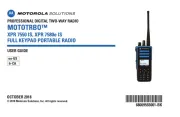
4 Juli 2025
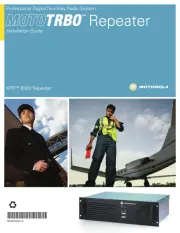
4 Juli 2025

8 December 2024

8 December 2024

24 September 2024

15 Maart 2024

22 Februari 2024

22 Februari 2024
Handleiding Radio
- Manhattan
- Ryobi
- Bose
- Salora
- Peaq
- Dreamgear
- Sogo
- Tristar
- Sven
- CRUX
- Hertz
- Milwaukee
- Graphite
- Xoro
- Irradio
Nieuwste handleidingen voor Radio
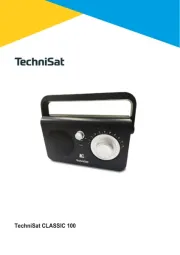
15 September 2025
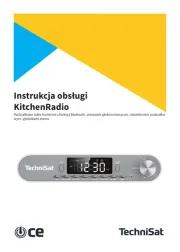
15 September 2025
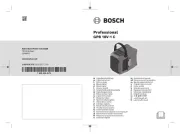
15 September 2025
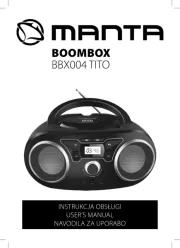
13 September 2025
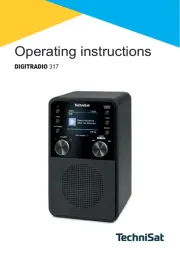
13 September 2025
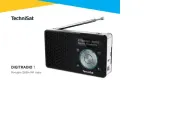
12 September 2025
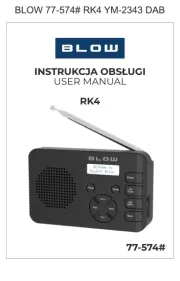
9 September 2025
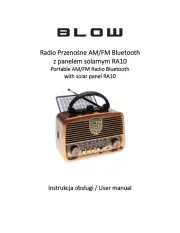
8 September 2025
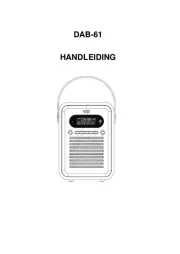
8 September 2025
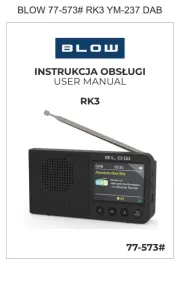
8 September 2025